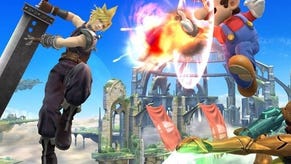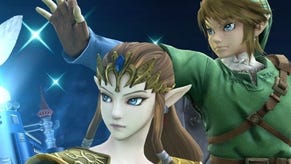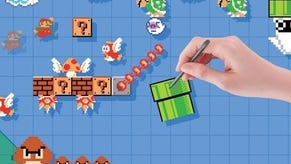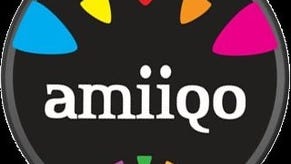Super Smash Bros. 3DS review
Pocket fighter.
Masahiro Sakurai was just 19 years old when he designed Kirby, the marshmallow-like blob that would become one of Nintendo's second-tier mascots, always straining for a look-in behind the front-row dazzlers like Mario and Link. Sakurai would be yoked to his creation for years (a time during which he created five Kirby games) before, by his own admission, he had to do something, anything else. His antidote was a fighting game, one in which Kirby was able to exact revenge on the rest of the Nintendo roster (or they on him). Sakurai worked on a demo in secret, without his employer's knowledge, believing that they'd never permit their most treasured characters to do battle. When he finally showed his workings, Nintendo agreed to fund Super Smash Bros., alongside the warning that it would likely never receive an overseas release.
1999's debut for the series proved the management wrong: the game sold close to five million copies worldwide. Despite the success, that irreverent, desperate spirit that inspired Sakurai to create the game's blueprint has remained strong. In Super Smash Bros. 3DS, the first game in the series for six years, it is fully preserved. If Street Fighter is the well-oiled martial arts tournament of video games then Super Smash Bros. is the medium's wild-eyed bar-room brawl: chaotic, noisy, undisciplined. Moreover, with its shower of novelty weapons (flame-throwing sunflowers, explosive pokéballs, throw-able Steel Diver submarines) and vast cast of costumed fighters, it's a bar-room brawl at a fan convention. Sonic didn't like the way Kirby winked at him; Pikachu accused Falco Lombardi of spilling his drink; Wii Fit Trainer did an accidental downward facing dog on Diddy Kong's toe. Mayhem ensues.
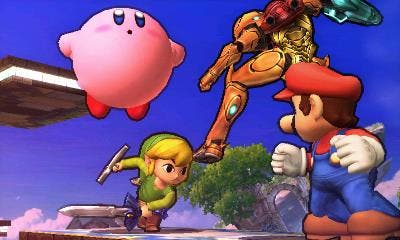
The spectacle of these unlikely duels has always been the series' most appealing move. In Super Smash Bros. it's better than ever. Meet the Villager, an improbable émigré from Animal Crossing's sleepy town. He or she (both versions are available) can smack his enemies with a shovel, take to the sky (hoisted by a fistful of red balloons), ride an explosive rocket-powered gyroid into enemies and even erect a house as a devastating finishing move. Face Villager against, say, Pikmin's Captain Olimar, with his bite-happy minions, or Ness, the squat American teenager from the Mother series, or Super Mario Galaxy's Rosalina with her emo-sweep fringe and the joke hits even before the first punch is thrown.
More suitable fighters supplement these improbable upstarts. Xenoblade Chronicles' Shulk (who wields the giant Monado sword and can cycle between different attack and defence set-ups with a button press) has a fearsome uppercut. Likewise Fire Emblem's stoical mercenary Ike cuts and slices with pleasing speed while Punch-Out's champ Little Mac throws volatile punches. There are two versions of Link ('toon', as per Wind Waker, and 'realistic', as per The Twilight Princess) and the more familiar roster of Super Mario duellers occupy the top row of options. Assist trophies even allow you to summon other characters into the melee and, as such, a single match can be filled with a range of pleasing cameos.
It's possible to clothe and equip each of your fighters with items that you win across the game's modes, a way to rebalance characters in subtle ways. Amazingly, you can also create new fighters from any Miis that you have stored on your 3DS. Each character's stats are defined by their size and shape, and they can be tailored both in terms of their clothes and move set (drawn from three category types of 'brawler', swordfighter' or 'gunner'). Used in conjunction with Mii Maker, Nintendo has essentially provided a means to settle important questions such as 'Who would win in a fight between Michael Jackson and Kirby?' or 'Taylor Swift and Samus?'

The battles play out in front of vibrant, familiar stages, most of which have been drawn from either previous Smash Bros. titles or Nintendo's own past handheld games. One stage takes the form of a Pictochat window where platforms are drawn in and scrubbed out by an invisible hand. There's a battle in the Nintendogs' living room, one on Yoshi's Island and another on top of the train from Zelda: Spirit Tracks. At one point you take to the dot-matrix sanctuary of an original Game Boy screen. The stages are dynamic, filled with movement and journey, and provide a thrilling backdrop as you try to knock your opponents so far off screen that their double-jump is unable to return them safely back to the arena. In most of the game modes comedy weapons and power-ups drop in from the heavens, mixing up play and adding variety to each fighter's otherwise-slim palette of moves.
The chaos of the game's multitudinous fight types extends beyond arenas. The game is a presentational mess, the user interface cluttered and confusing. Labyrinthine menus trail off to distant mini-games, forsaken training facilities, long lost character creation and customisation screens, dusty vaults filled with innumerable trophies, shops, screenshot collections, saved replays and important tips.
Buried amongst the options you find Smash Run, an entire 3DS-only mode in which each player is given five minutes to navigate an open environment collecting stat-increasing power-ups before a face-off battle. Elsewhere, Home-Run Contest gives you 10 seconds to bash a punching bag before picking up a baseball bat and launching the bag as far as you can. All this comes before you venture onto the fields of online play where it's equally easy to become lost in options. Your first experience of the game is bewildering, and that sense of disorientation never quite leaves.
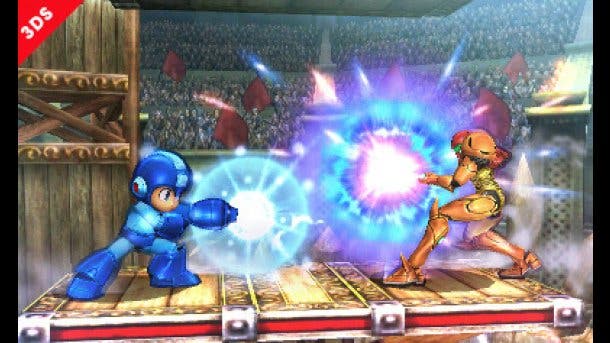
Super Smash Bros. has humour, heritage and breadth in abundance then. But what about depth? A good place to start in terms of untangling the game's core from its adornments is Online Mode's ranked battles (dramatically dubbed 'For Glory' as opposed to 'For Fun'). This one-on-one match removes all items from play, and takes place on each stage's alternate 'omega' form: a flat surface without any hazards. Here the game's fundamentals are exposed. The characters' arcing, Halo-esque jumps have no urgency, the zooming camera can be disorientating (especially on the handheld's tight screen), and, most troublingly, the output for a player's input is all too often weak and unsatisfying. The handheld's d-pad cannot be used to move your character (instead it triggers taunts) and the analogue stick prevents precision inputs. Here, stripped of its fan service and joyful chaos the grim truth is revealed: Super Smash Bros. is a mediocre fighting game.
Is that missing the point? Smash Bros has always been about the humour and, most importantly, the enjoyment of sitting on a sofa with friends giggling through one-more-go matches till the early hours of the morning. Even if the game's feel is fundamentally off, its exuberance, silliness and fan service combines to create something that is much more than a straight-faced fighter. It's a fair (if charitable) point of view. But on the 3DS, at least, the argument collapses. Even when playing with friends your nose is buried in your own screen; the physical posture of the player is solitary, rather than communal. Away from the focal point of the television, it's no longer a riotous local multiplayer game; it's a more serious proposal.
The outlandish animations continue to delight as the hours pass, and the extraordinarily generous drip-feed of new items, stages, modes and characters will draw you back in over and over again. This is a lovingly made game, filled with the fruits of hard and caring labour. But it is also a game built on undeniably weak foundations. Anyone who's pulled off Nagare Namikawa's synchronised swimming finishing move in the Rival Schools series or played the Sega Saturn's Pocket Fighter will know that humour and irreverence can be elegantly combined with sturdy fighting mechanics. Super Smash Bros. manages only the humour. Away from the communal focus of the television screen, it's a much weaker joke.


